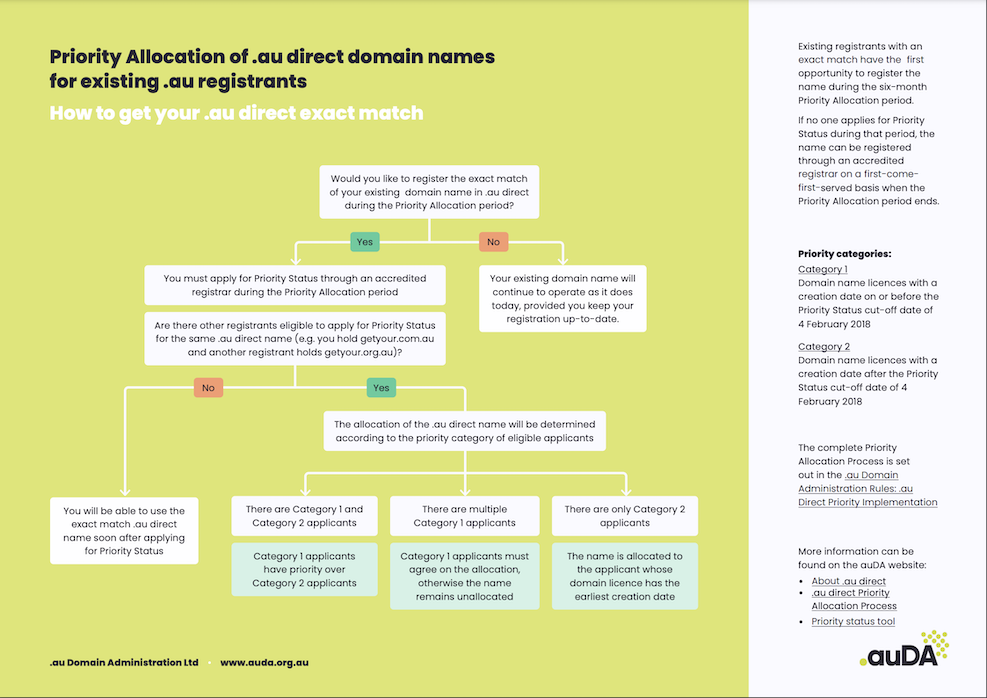We talked about the .au direct launch date being announced and what that means for the Australian public. Today’s blog will focus on what the Priority Allocation Process is and how it works.
What is the Priority Allocation Process?
The Priority Allocation Process is designed to provide existing registrants in the .au namespace an opportunity to register their matching .au direct name prior to them being released to the general public on a first-come, first-served basis. For example, if Afilias Australia wanted to apply for ‘afilias.au’, we could put in an application at any time during the Application Period because we have both the ‘afilias.com.au’ and ‘afilias.net.au’ domain licenses. As we are the only entity that has the ‘afilias’ keyword registered, we will be able to register the ‘afilias.au’ license and use the domain shortly thereafter. The Priority Application Period begins on 24 March 2022 and will last 6 months.
What if other parties have a license in other zones?
As there are over 3.4 million domains registered in the .au namespace across various zones, including com.au, net.au, org.au, gov.au and edu.au, there may be someone else that would like to apply for the same .au direct domain as you. So, who gets the domain name? It will all come down to the creation date of your domain name, and applications will be put into two categories: Category 1 and Category 2.
Category 1 is for domains that are created on or before 4 February 2018. Category 2 is for domains that are created after 4 February 2018 up until the start of the Application Period on 24 March 2022. Category 1 has priority over Category 2, so if you put in an application using a domain name that has a create date before 4 February 2018 and someone else has a competing application with a domain create date after 4 February 2018, then you would be allocated the domain name.
If multiple applications are in Category 1, then the applicants will have to negotiate with each other and come to an agreement on who will be allocated their matching .au direct domain name. Once an agreement has been reached, the unsuccessful applicants will be able to withdraw their applications so the .au direct domain can be allocated. If an agreement cannot be reached, the .au direct domain will remain un-allocated and the applicants will need to renew their applications every year until an agreement is reached.
If there are multiple Category 2 applicants, then allocation would be based on the domain name with the earliest creation date.
How do I know what Category I am in and if I have to compete with others?
auDA launched a very helpful Priority Status Tool that you can use to look up your domain name and check if other applicants would qualify for the same .au direct registration. If there are multiple applicants, the tool will show which domain qualifies for Category 1 or 2 and if an application has been put in for any of them.
We hope this blog helps explain how the Priority Allocation Process works. The team at auDA have also put together a very helpful flow chart that takes you through the decision process.
Questions? Feel free to reach out at blog@afilias.com.au.

